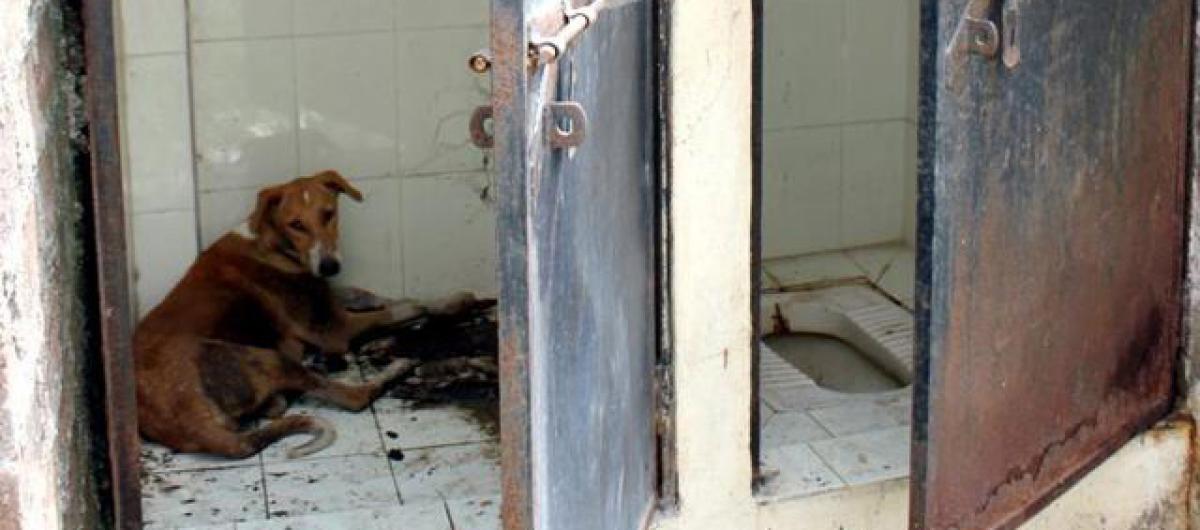Live
- India carries out successful launch of medium-range ballistic missile's new version
- K'taka BJP files complaint with EC over Congress' protest on Vidhana Soudha premises
- Time for Global South to assume greater role: EAM Jaishankar at ASEAN meet
- Rajender Rao is Congress candidate for Karimnagar Lok Sabha : Ponnam
- Part-2 sequel of fraud of Congress is being witnessed by people: KTR
- DK Aruna obstructed construction of Narayanapet irrigation project: Revanth
- National Panchayati Raj Day 2024: Date, History, Significance, and Observance
- Unlock Radiant Skin: 10 Essential Foods for a Glowing Complexion
- Mamata Banerjee slams judiciary over court ruling in school jobs case
- Visakhapatnam will be destiny of Andhra Pradesh: Jagan Mohan Reddy
Just In

In 2016, as many as 96.5 per cent of rural elementary government schools had toilets, but more than one in four (27.79 per cent) were dysfunctional or locked, according to data collected for the Annual Status of Education Report (ASER). Only about 68.7 per cent of schools had working toilet facilities for students.
In 2016, as many as 96.5 per cent of rural elementary government schools had toilets, but more than one in four (27.79 per cent) were dysfunctional or locked, according to data collected for the Annual Status of Education Report (ASER). Only about 68.7 per cent of schools had working toilet facilities for students.
In 2016, the ASER survey was conducted in 589 of 619 rural districts, and surveyors visited 17,473 schools. ASER has been collecting data on water and sanitation infrastructure in schools since 2009. The proportion of schools with toilets increased 7.43 percentage points from 2010 to 2016. Functional toilets have increased 21.45 percentage points in the same period. But the rate of progress is now slowing, and government agencies do not collect data on usable toilets.
The National Sample Survey, the District Information System for Education (DISE), and the Census, which are the main sources of data on water and sanitation-related indicators, do not measure the usability of sanitation infrastructure.
The working and use of sanitation facilities is ignored because of an overemphasis on the availability of this infrastructure. In states where the gap between availability and functionality is massive – a common occurrence in north-eastern and central states – focusing only on availability of toilets can be misleading.
For instance, if only availability is considered, 95.35 per cent of government elementary schools in rural Uttar Pradesh in 2016 were observed to have toilets. But if we look at the functionality of these toilets, we find that only 54.83 per cent were reported to have working toilets.
The percentage of schools with toilet facilities, in terms of availability has been reported in the high nineties for the past few years, which lines up with the vision of universal sanitation in schools. But this encourages complacence about water and sanitation. When we look at data on working toilets, we realise that India is far from achieving near-perfect, universal sanitation in schools.
For instance, in Mizoram, slightly more than one in two schools (54.88 per cent) were found to have dysfunctional or locked toilets. A similar situation was observed in Manipur (47.19 per cent), Meghalaya (45.74 per cent), and Nagaland (45.24 per cent). This gap between usability and availability is also observed in states that have better development indicators. In Kerala, 100 per cent of schools had a toilet, but 18 per cent were found to be unusable in 2016.
Further, access to working toilets reduced over time. In the context of the Swachh Bharat Abhiyan-Gramin (Clean India Campaign-Rural) and Swachh Bharat Swachh Vidyalaya (Clean India Clean School) measuring usability of sanitation infrastructure becomes even more important. Broken toilets do not bring us any closer to realising the vision of Swachh Bharat (Clean India).
While a growth in the percentage of schools with working sanitation provisions has been reported over time, this improvement is slowing across most states, even as sanitation has been at the forefront of India's political discourse, and funding for sanitation policies has increased significantly in the past few years.
One of the reasons for high dropout rates and non-enrolment for girls in rural India could be the lack of toilets in schools, and thus it is worrying that improvement in working sanitation facilities for girls has also slowed down. Secondly, data show that a lower proportion of schools have working toilets for girls than they have for boys, which means that girls do not enjoy the same level of access to working sanitation facilities as boys do.
This has been calculated by comparing the proportion of schools that were found to have a working girl's toilet with the proportion of schools that had a working toilet. It is only when we look beyond availability of toilets, and take into account the large gap between usability and availability of sanitation infrastructure, that we can make more nuanced arguments about indicators like rates of improvement in sanitation and gender parity, and make better policy to meet these challenges. (In arrangement with IndiaSpend.org)
By Ranajit Bhattacharyya & Aadarsh Gangwar

© 2024 Hyderabad Media House Limited/The Hans India. All rights reserved. Powered by hocalwire.com







